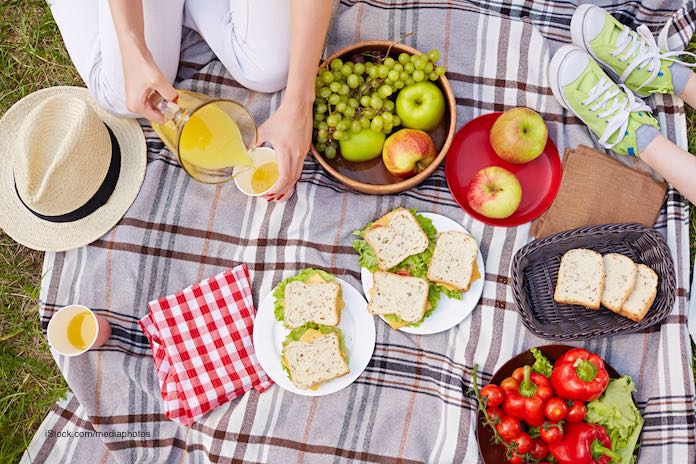The California Department of Public Health has issued a press release, reminding Californias to follow food safety rules this summer to avoid illness. Salmonella, E. coli, and Campylobacter are the most common bacteria that cause food poisoning outbreaks. There are some effective steps you can take to reduce your risk of illness.

Follow simple safety tips for properly preparing and handling food. Follow the four “C’s”: Clean, Cross-Contamination, Cook, and Chill. For “clean,” always wash your hands with warm, soapy water for at least 20 seconds before you prepare food, before you eat, and after handling food. Scrub cutting boards with hot, soapy water after preparing each item. And wash and thoroughly rinse utensils and cutting boards. Keep pets away from food preparation areas.
Prevent cross-contamination by keeping raw and cooked foods separate. Use separate cutting boards and knives for chopping product an meat. Never rinse raw poultry because that will aerosolize germs and they will spread around your kitchen. Discard used marinades. And use clean utensils and plates to remove cooked foods from grills and pans. Do not put cooked foods back into the same dish that held raw or uncooked foods.
At the grocery store, if you use reusable shopping bags, use special ones for meats, and wash and dry the bags frequently. Put raw meats and foods eaten uncooked in separate spots in the grocery cart.
For cooking, always use a reliable and accurate food thermometer to make sure that your food is cooked to a safe final internal temperature. Color is not an accurate guide to doneness. Measure the temperature in the thickest part of the food, making sure it doesn’t touch bone or the pan. Always wash thermometers every time you use them. Ground meats should be cooked to 160°F; whole cuts of beef, pork, and seafood to 145°F, poultry to 165°F, and egg dishes and casseroles to 160°F. Wait until foods are completely cooked before taste testing. If you use a microwave to cook food, always stir and rotate the food to make sure there are no cold spots. Use standing time after microwave cooking so the heat distributes evenly through the food. Make sure that all hot foods are kept at at least 140°F.
After the food is prepared, you need to be concerned about chilling. Perishable food should not be left at room temperature longer than 2 hours, or 1 hour if the ambient air temperature is over 90°F. The danger zone for bacterial growth is 40°F to 140°F. Keep hot foods hot and cold foods cold. And remember that coolers can keep food cold, but will not re chill food that has been exposed to warm conditions. It’s better to throw food away after eating outside, at a picnic or on a hike, than try to take it back home, refrigerate it, and eat it again.
When you put food in the fridge to chill, put it in shallow pans and cover loosely to let the warm air escape. Refrigerated foods that are packaged in sealed or vacuum packaged containers should always be refrigerated. Storing these foods at room temperature could facilitate the growth of Botulism toxin. Finally, thaw foods in the refrigerator, or in the microwave just before cooking. Never thaw frozen foods on the counter.




